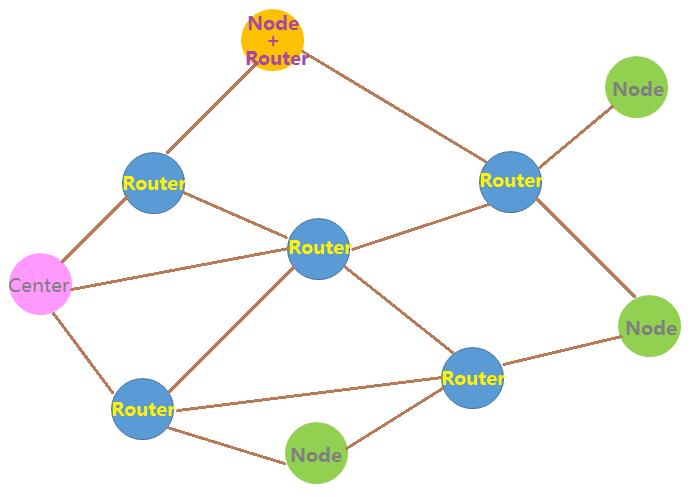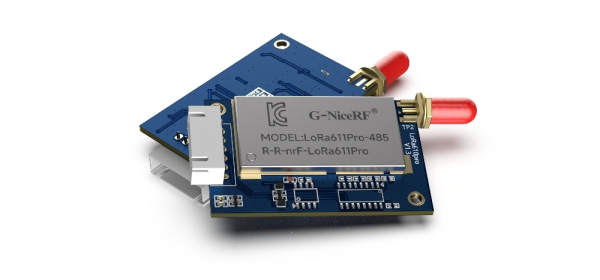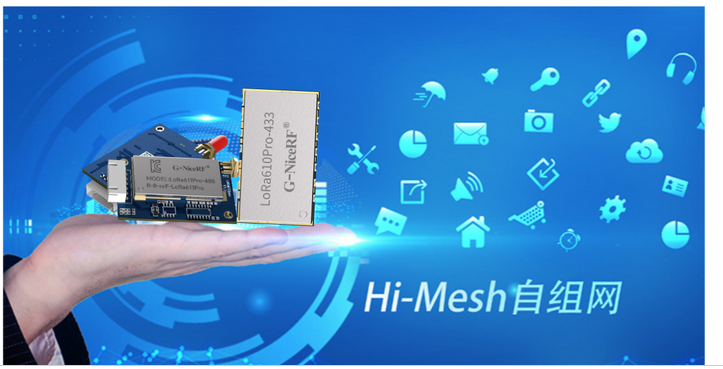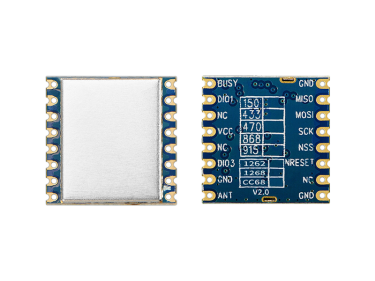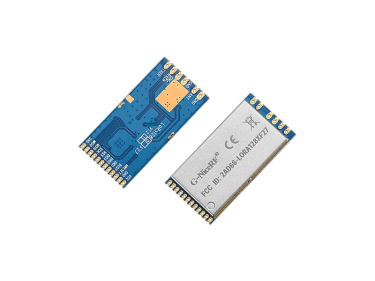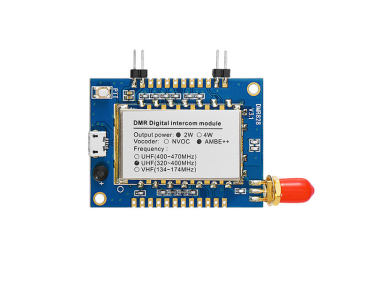Exploring LoRa MESH Networking Technology: Why Choose LoRa MESH Networking Solution
With the continuous development of IoT technology, wireless communication has been widely used in various fields. LoRa is a low-power, long-range wireless communication technology, and LoRa MESH is a self-organizing network communication protocol based on LoRa technology. Simply put, LoRa MESH is a MESH networking solution based on LoRa transmission.
Before introducing LoRa MESH, it is necessary to understand what LoRa technology is.
LoRa technology is a IoT communication technology developed by Semtech Corporation, characterized by low power consumption, long range, and strong anti-interference capability.
Long Range
LoRa has a low transmission rate but high sensitivity, enabling communication over much longer distances compared to other wireless communication technologies. It can transmit distances of several kilometers in outdoor environments and even cover long distances in urban areas. Therefore, it is suitable for applications requiring long-range, low-speed, and small data transmission.
Low Power Consumption
LoRa technology employs a low-power transmission method, allowing devices to operate for long periods on battery power. This feature is ideal for devices that need to operate for extended periods and are difficult to replace batteries, such as sensor nodes, smart city devices, etc.
Strong Anti-Interference Capability
LoRa employs spread spectrum technology, giving it excellent anti-interference capabilities. Even when encountering external electromagnetic signal interference during communication, LoRa can continue stable communication, while traditional wireless technologies may fail to communicate.
Large-Scale Connectivity
LoRa supports large-scale device connections, with each base station capable of simultaneously handling thousands of devices, making it suitable for building wide-area Internet of Things (IoT) networks (LPWAN).
What is LoRa MESH?
LoRa MESH is a self-organizing network communication protocol based on LoRa technology. It utilizes LoRa wireless communication technology to form a self-organizing network with multiple devices, creating a mesh topology to achieve interconnection between devices. It combines the advantages of LoRa technology with the characteristics of Mesh self-organizing networks.
Self-Organizing Network Features
LoRa MESH networks have self-organizing features, automatically building and maintaining networks. When devices join or leave the network, the network automatically adjusts its topology to ensure the stability of data transmission. This self-organizing feature provides LoRa MESH networks with high flexibility and scalability.
Router Node: A router node receives data from the network, updates routes, and forwards data.
Terminal Node: A terminal node does not have routing functionality and is typically deployed at the edge of the network.
Multi-hop Transmission:
LoRa MESH networks use multi-hop transmission, where data can be relayed through multiple nodes before reaching the destination node. This multi-hop transmission effectively extends the communication distance, improves signal penetration, and reduces the communication pressure on individual nodes. This is particularly important for devices such as smart homes, environmental monitoring, and more.
High Capacity:
Multi-hop communication increases the network's capacity and reliability. Even if a node fails, data can still be transmitted through alternative paths. Therefore, LoRa MESH has high capacity, supporting a large number of device connections. This makes LoRa MESH networks suitable for large-scale IoT scenarios such as smart cities, smart agriculture, and more.
Low Cost:
LoRa MESH employs low-cost devices and solutions, reducing the cost barrier for IoT applications. This allows more enterprises and developers to participate in IoT innovation and applications.
Communication Modes of LoRa MESH Technology:
Single-hop Communication:
Single-hop communication is the basic mode where nodes communicate directly with gateways or other nodes, resulting in a simple and direct data transmission path.
Multi-hop Communication:
Multi-hop communication involves data transmission from one node through multiple relay nodes before reaching the destination node or gateway. This communication mode expands the network coverage range, enhances network stability, and reliability.
Self-Organization:
LoRa MESH networks support self-organization, where nodes can automatically discover and join the network without manual intervention. Nodes establish communication connections with each other, forming a self-organized network structure.
Multipath Communication:
Multipath communication allows data to reach the destination node or gateway through different paths, increasing communication flexibility and reliability. If one communication path is blocked or fails, data can be transmitted through alternative paths, ensuring continuous communication.
Frequency Hopping Technology:
LoRa MESH networks can utilize frequency hopping technology to enhance communication security and anti-interference capabilities. Nodes dynamically switch channels during communication to avoid interference and channel collisions, ensuring stable data transmission.
LoRa611Pro Wireless Data Transmission Module Transmission Modes
The LoRaPro module is the latest series of upgraded networking wireless communication modules introduced by NiceRF. It is developed based on Semtech's SX127X chip and adopts advanced LoRa spread spectrum modulation frequency hopping technology, high-efficiency receiver sensitivity, which makes its penetration ability and communication distance far surpass the currently commonly used FSK and GFSK products, and has stronger anti-interference capabilities. To meet the application needs of different customers, the LoRa611Pro offers two different transmission modes: Non-MESH and MESH networking transmission modes, suitable for various application scenarios. The software design of this wireless data transmission module is in a multi-functional selectable manner, allowing users to switch between different operating modes through PC software configuration. In MESH mode, the routing module has the function of automatic routing. Users can form a networking transmission without blind spots and distance limitations through the combination of multiple modules. At the same time, users can also encrypt wireless data using AES128 encryption through PC software or serial port commands, making data transmission more secure. In wireless data transmission modules, the non-mesh transmission mode is suitable for simple, fast point-to-point transmission, suitable for small-scale and real-time applications with high requirements.
Sharing Applications of LoRaMESH Self-Organizing Network
Utilizing the advantages of LoRa's low power consumption, long-distance, and small data transmission technology, LoRaMESH is an excellent solution for IoT LoRa applications.
LoRaMESH has many advantages when applied in IoT scenarios. Let's take a look at some specific examples:
Smart Cities: LoRa MESH networks can be used for smart lighting control, intelligent traffic management, garbage bin monitoring, and other applications in smart cities, achieving the intelligent management and optimization of urban infrastructure.
Agricultural IoT: LoRa MESH networks can be used for soil moisture monitoring, weather data collection, farmland irrigation control, and other applications in agricultural IoT, improving the efficiency and quality of agricultural production.
Industrial Automation: LoRa MESH networks can be used for equipment monitoring, production line management, logistics tracking, and other applications in industrial automation, realizing intelligent production and management in factories.
Logistics Tracking: LoRa MESH networks can be used for cargo positioning, temperature and humidity monitoring, transportation route planning, and other applications in logistics tracking, improving the efficiency and safety of logistics transportation.
Environmental Monitoring: LoRa MESH networks can be used for air quality monitoring, water quality monitoring, noise monitoring, and other applications in environmental monitoring, achieving real-time monitoring and early warning of the environment.
Smart Homes: LoRa MESH networks can be used for smart home appliances control, security monitoring, smart door locks, and other applications in smart homes, enhancing the comfort and convenience of home life.
IoT Sensor Networks: LoRa MESH networks can be used to build large-scale IoT sensor networks, realizing real-time monitoring and data collection of the physical world, and providing data support for various applications.
In summary, LoRa MESH technology has extensive application prospects in various vertical fields of IoT, providing reliable technical support for realizing intelligent, convenient, and efficient lifestyles and work modes.
For more details on LoRaMesh solutions or customized solutions, please contact NiceRF.
 +86-755-23080616
+86-755-23080616
 sales@nicerf.com
sales@nicerf.com
Website: https://www.nicerf.com/
Address: 309-314, 3/F, Bldg A, Hongdu business building, Zone 43, Baoan Dist, Shenzhen, China


